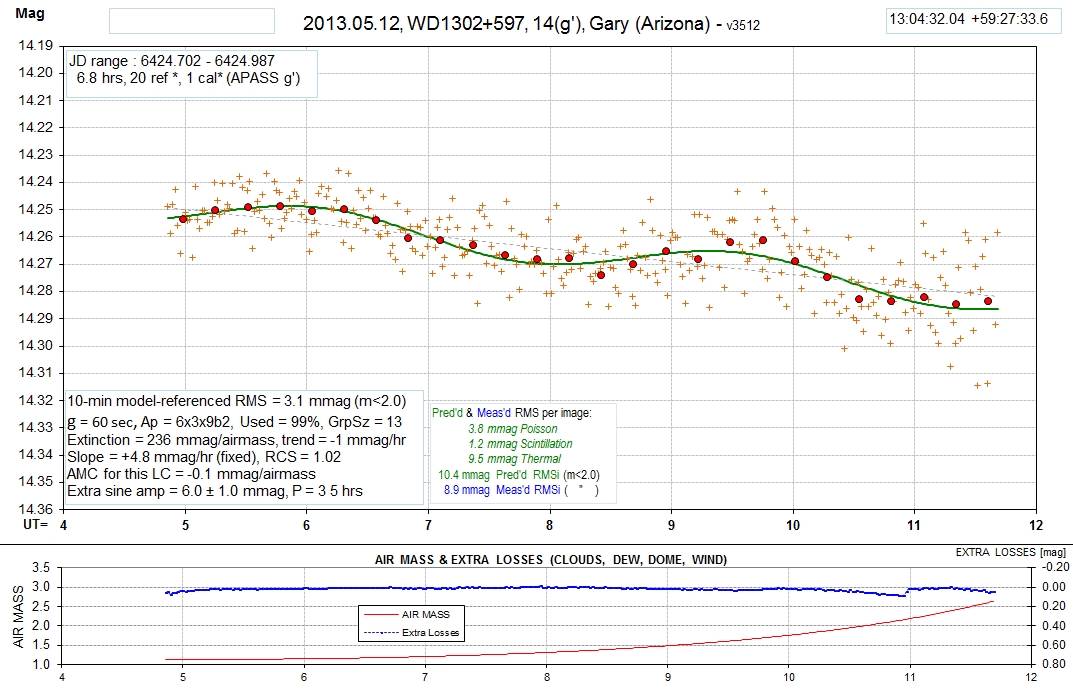This web page describes a white dwarf star whose variations were discovered by amateur observers as part of the PAWM2 project. The semi-amplitude (~6 mmag) and period (~3.5 hours) could be produced by 1) a star spot, or 2) an exoplanet reflecting WD star light.Update: 2013 Aug 13, Pierre Bergeron (WD expert in Canada) reviewed this web page and will keep it in mind for anyone interested in what we found, and wrote "I will let you know if I ever go back to study this star in the future."




